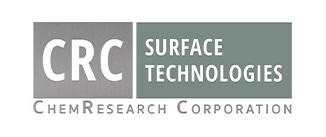
14 Aug Why Chemical Conversion Coatings Are Essential for Military & Defense
In military and defense applications, every component must meet the highest standards of quality. From vehicles and aircraft to equipment, protecting metal surfaces from damage and corrosion is critical in ensuring their safety. Chemical conversion coatings—also known as chromate conversion or chem-film coatings—play a vital role in improving durability, reliability, and performance.
These defense-grade coatings work by chemically altering the surface of metal parts to form a protective, corrosion-resistant film. They can also enhance electrical conductivity or make it easier to apply paint and other surface treatments. When it comes to military applications, conversion coatings are not just beneficial, they’re essential. Here are five reasons why.
1. Superior Corrosion Resistance in Harsh Environments
Military vehicles, aircraft, and weapons systems often have to function in unforgiving conditions, like deserts, oceans, jungles, and arctic environments. Chem-film coatings provide an effective barrier against corrosion, which is crucial for extending the lifespan of military equipment and reducing maintenance costs in the field. In fact, rust alone costs the Pentagon up to $21 billion per year.
2. Excellent Paint Adhesion for CARC Systems
Chemical Agent Resistant Coating (CARC) paint is standard for military vehicles and equipment. It offers benefits like resistance to chemical and biological agents, quick decontamination, and durability in extreme weather.
Without a proper conversion coating, the CARC topcoat may delaminate or degrade more quickly, especially under mechanical or chemical stress. Chemical conversion coatings provide a chemically stable, porous surface that allows the CARC paint to bond more permanently.
3. Compliance with MIL-SPEC Standards
Chem-film coatings are among the few surface treatments explicitly approved by multiple military standards, including MIL-DTL-5541, which covers chromate conversion coatings for aluminum and its alloys.
This means that these coatings are not just recommended—they are often required. Using chem-film coatings ensures compliance with Department of Defense standards and ensures consistency, reliability, and long-term performance for successful missions.
4. Lightweight Protection Without Sacrificing Durability
Military vehicles and aircraft must be as light as possible without compromising strength or structural integrity. Chemical conversion coatings are incredibly thin (typically less than 1 micron), adding virtually no weight to metal components. Despite their minimal profile, chem-film coatings deliver powerful protection, making them ideal for aerospace and military defense systems.
5. Electrical Conductivity Where Needed
Most protective coatings have insulating effects, but certain types of chem-film coatings allow for controlled electrical conductivity. This makes them indispensable for military electronics components, where grounding and shielding are essential. For example, Type I chromate conversion coatings (which contain hexavalent chromium) are often specified where conductivity is critical, especially in aerospace and communications.
Chemical Conversion Coatings in Phoenix
Chemical conversion coatings are critical for mission success. Whether used alone or as a foundation for CARC and other finishes, chemical conversion coatings are a trusted solution for enhancing the durability, safety, and performance of defense equipment—even in the most demanding environments.
If you’re a military or defense manufacturer and you’re looking for a reliable partner for chem-film coating, choose CRC Surface Technologies. We deliver defense-grade surface treatments that meet the strict demands of military applications. To request a quote, please send an email to rfq@chemresearchco.com, or call us at 602-253-4175.
Images used under creative commons license – commercial use (8/14/2025). Photo by David Goldman on Unsplash

